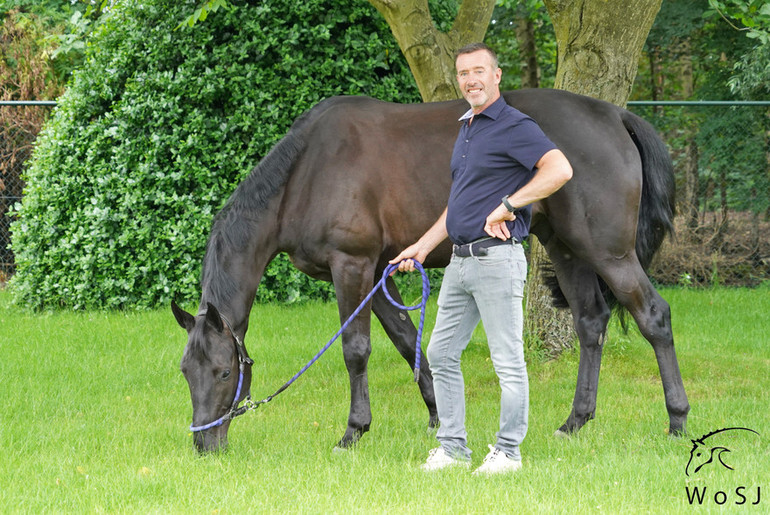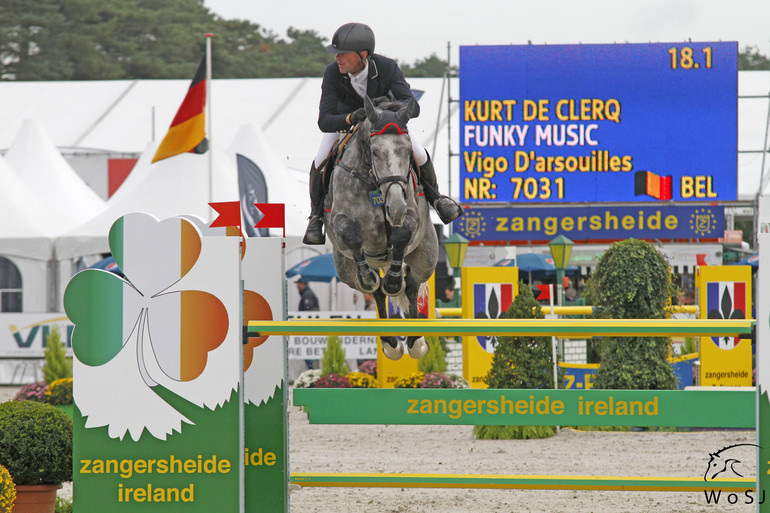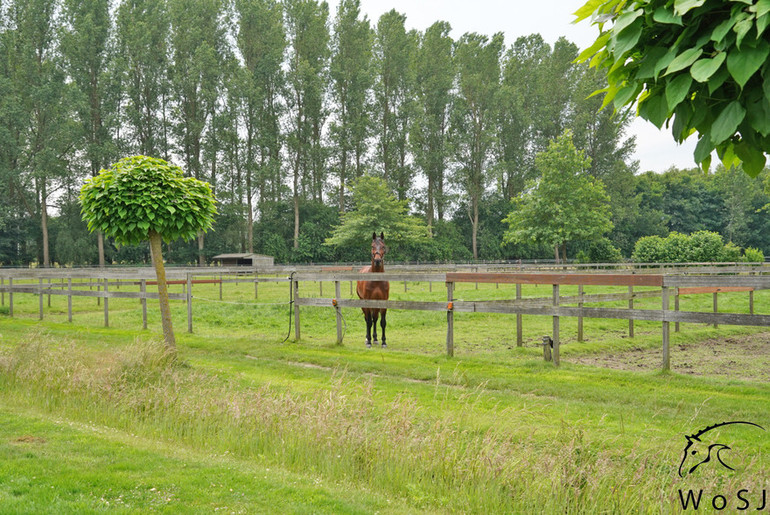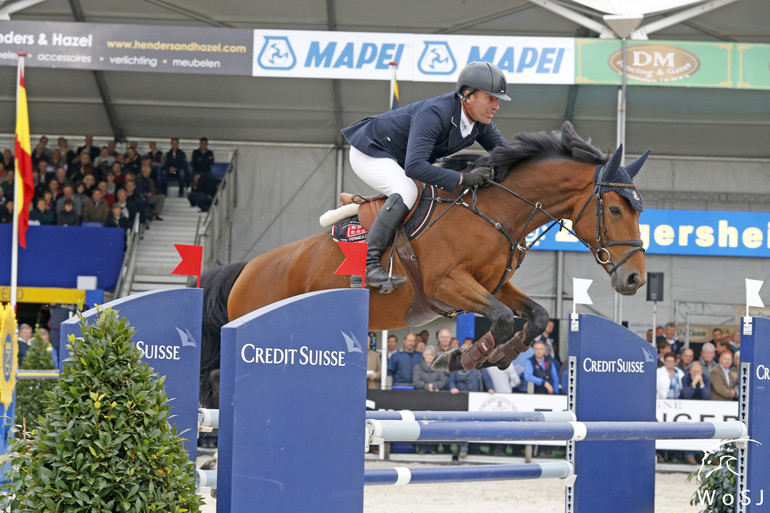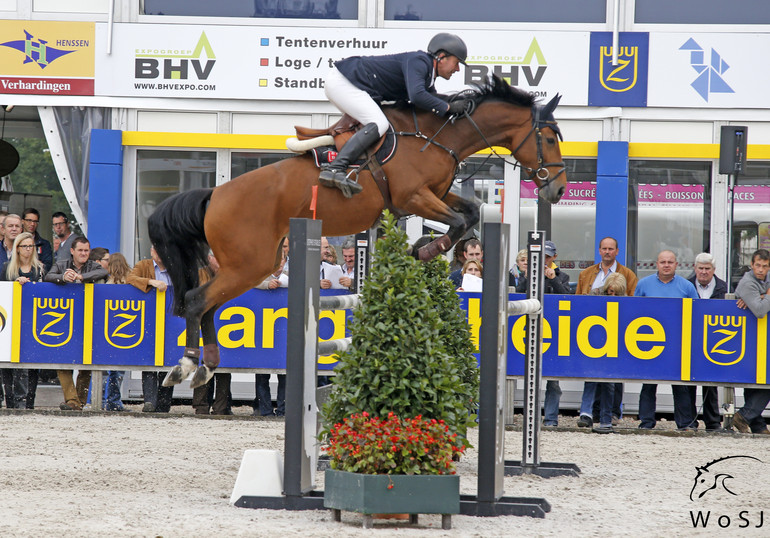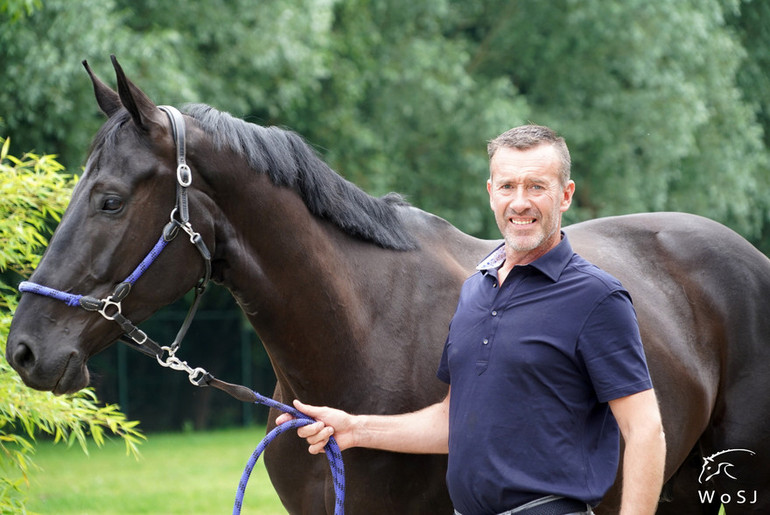Text © World of Showjumping
Emerald, Flora de Mariposa, Gazelle, Narcotique de Muze, Vigo D’Arsouilles... Kurt De Clercq has sat on some of the best horses in the sport. Meeting De Clercq at his home De Moerhoeve, outside Antwerp, the 48-year-old Belgian tells World of Showjumping how patience is the best virtue when working with young horses and how he has chosen to always focus on the positives in each horse.
No time or interest for international shows
For De Clercq, riding has always been a passion – and with this he does not mean competing at a high level. “I come from a normal family, with no big financial resources. Next to my childhood home, there was a manége – my father learned to ride there and so did I,” De Clercq tells. “When I was a junior, I rode some bigger classes, but it got too expensive. We did not have the money to buy a really good horse, so instead, I put my time in the young ones. I always rode young horses, and I was happy with that. I have never really been that interested in competing internationally or at a higher level. What I enjoy, is to work with the horses and give them time. Later on, I am happy to see them go to good riders and continue their careers.”
When he was 25, De Clercq got an offer from Johan Lenssens who wanted him to train his young horses. At the time, De Clercq was working at a garage – and to this day, De Clercq still has what he refers to as a “normal job”. Four days a week, he works as a painter. After five years working with Lenssens, De Clercq started his own business, while also riding part-time for Stal de Muze and Joris De Brabander. “When I was young, I got to ride a lot of good horses: During my time with Joris, I rode Vigo, Emerald, Narcotique, Cantinero, Sapphire…,” he tells.
“We moved to De Moerhoeve in 2007, and have done a lot of renovation since,” De Clercq tells about his current home base. “We have 16 boxes and only young horses. We are also breeding in partnership with Jan Wuytack and we have many horses together. The horses come here when they are four, and we start training them. We keep the really good horses until they are around seven, and then give them to better riders – or to good men with good riders – like for example Niels (Bruynseels) or Stephan (Conter). I only do the young horses: Like I said, I have no time or interest for international shows.”
“I used to saddle break the young horses myself, but in 2005 I had a big accident,” De Clercq tells. “After that, I stopped doing it. I was in coma for one week, spent one month in hospital and had a year with rehabilitation. Afterwards, I wanted to ride again – even though my balance was gone. Now we can laugh about it, but I had to learn to talk and walk again. That we bought this place only two years later might seem a little bit crazy.”
The slow way is the best way
“I always train the horses my way, which is slow,” De Clercq explains about the system he has in place. “With young horses, it is important to keep it natural and keep the horses happy, so I ride the horses outside as much as possible. In my system, I let the horses move completely how they want by nature; with their head up or down – it does not matter to me. After I have had the horses, they do need some dressage work…” De Clercq smiles. “But most importantly, when they come from me, they will be happy horses!”
“At home, all the horses normally go to the field every day and I work the 4-year-olds on the lunge or walk them out for a hack. All horses come out twice a day, and normally once a week I take them out for a show. At a show, I always jump two rounds with each of them. With the special horses, I might jump at home, but the horses that are not spooky I jump only at the shows,” De Clercq continues.
“I do a lot of shows with the young horses, but only small ones. I never jump big with them. Most horses jump good at home, but they have to learn what to do when they are at a show. I believe that they need this show experience: If you want to jump at international shows when the horses are seven, they need some mileage – otherwise it will be difficult. Young horses have to see everything.”
Home jumpers and show jumpers
“Usually, most horses jump more at home than at shows, whereas my system is the opposite,” De Clercq continues. “When you jump at home, you easily jump bigger and bigger. At the shows, you warm up and go to the ring, you do around ten jumps and you are finished. I think the young horses don’t need to learn how to jump at home: They need to learn show jumping.”
“In my opinion, there are three types of horses in this world: Home jumpers, show jumpers and those who jump well in the warm-up,” De Clercq smiles. “At the end, we all need a show jumper! However, you can sell a home jumper, but your client will not be happy. Today, you want a show jumper, not a home jumper.”
“I try to do two months which include shows and then I give the horses a break, before I go again,” De Clercq says. “I go to different places. This is important for the young horses. I bring my father too; I think for the last 35 years, he was always there to help me.”
“I don’t ride to win. I believe that the horses have to learn the basics with me, so that they get their education – but still they need to have kilometres left in them when they go to their new riders,” De Clercq says. “I want my horses to jump good, and that is more important for me than the result. They should be relaxed: Only this way they are able to learn.”
The right mentality
In a young horse, De Clercq wants to see carefulness and blood. “I want really careful horses,” he tells. “I am not a good rider for horses that have a lot of scope but are not careful. All the good horses I have had – like Flora – have been very careful. In my experience, already as young horses, the really good ones will never have more than a fence down every now and then.”
“I also think the good horses need to have the right mentality. They have to fight for you in the ring; they have to want to be clear. Riders can have bad days, but the really good horses will help you in those moments. You have horses that can jump the biggest classes, but are never clear. However, when the heart and the mentality are there, a horse can do more than you would imagine,” De Clercq says.
“There are also times when the feeling I have on a horse does not match how it looks from the ground. For me, the feeling the horse gives me is the most important,” De Clercq says.
“I try to see the positive in each horse,” De Clercq continues. “You should not focus on the negative, I think it is very important. There is no manual to horses, each one is different. As a rider you also have to remember that you are only as good as your horse. If you manage your horse good, you can be on the top; if not, you are out in a few months. Horses are not machines.”
Stay calm and try again
To choose the very best – out of the group of over twenty horses he has produced that have ended up jumping the biggest tracks in the world – is a challenge for De Clercq. “Sapphire, I think…,” he begins. “Or Flora... When I see Mumbai now, I think he was the best from that year. We still have Mumbai’s mother Ischgl de Muze – Mumbai was her first foal. Vigo, who became World Champion with Philippe Le Jeune, is another special one, for sure,” he continues. “I rode Vigo when he was seven, right before my accident. When Vigo was retired in Mechelen, I got a Longines-watch from Philippe – for me, a normal guy, to get a recognition from someone like Philippe… I keep that watch at home, and I don’t wear it a lot,” De Clercq laughs.
But rather than any recognition, it’s seeing his horses grow that brings De Clercq the most joy. “Getting to know the horses, to see how they improve, that is the best part of my job,” he tells. “The first jump on any horse is always interesting, the feeling you get. When I take them to a show for the first time, I always think the good ones jump careful and very well straight away. However, you have to give them time. I don’t give up on a horse easily: I keep trying – sometimes for too long. Often, one year makes a huge difference when it comes to young horses.”
“The most challenging part is having the patience,” De Clercq smiles. “You have to stay calm and just try again and again, every time, again. Not every horse will match every rider: With the right rider, a good horse can jump 30cm higher. It takes a long time before you can say for sure if a horse is one for the top sport: Eight years at least. Out of ten maybe two are good enough in the end.”
No reproduction without writter permission, copyright © World of Showjumping



